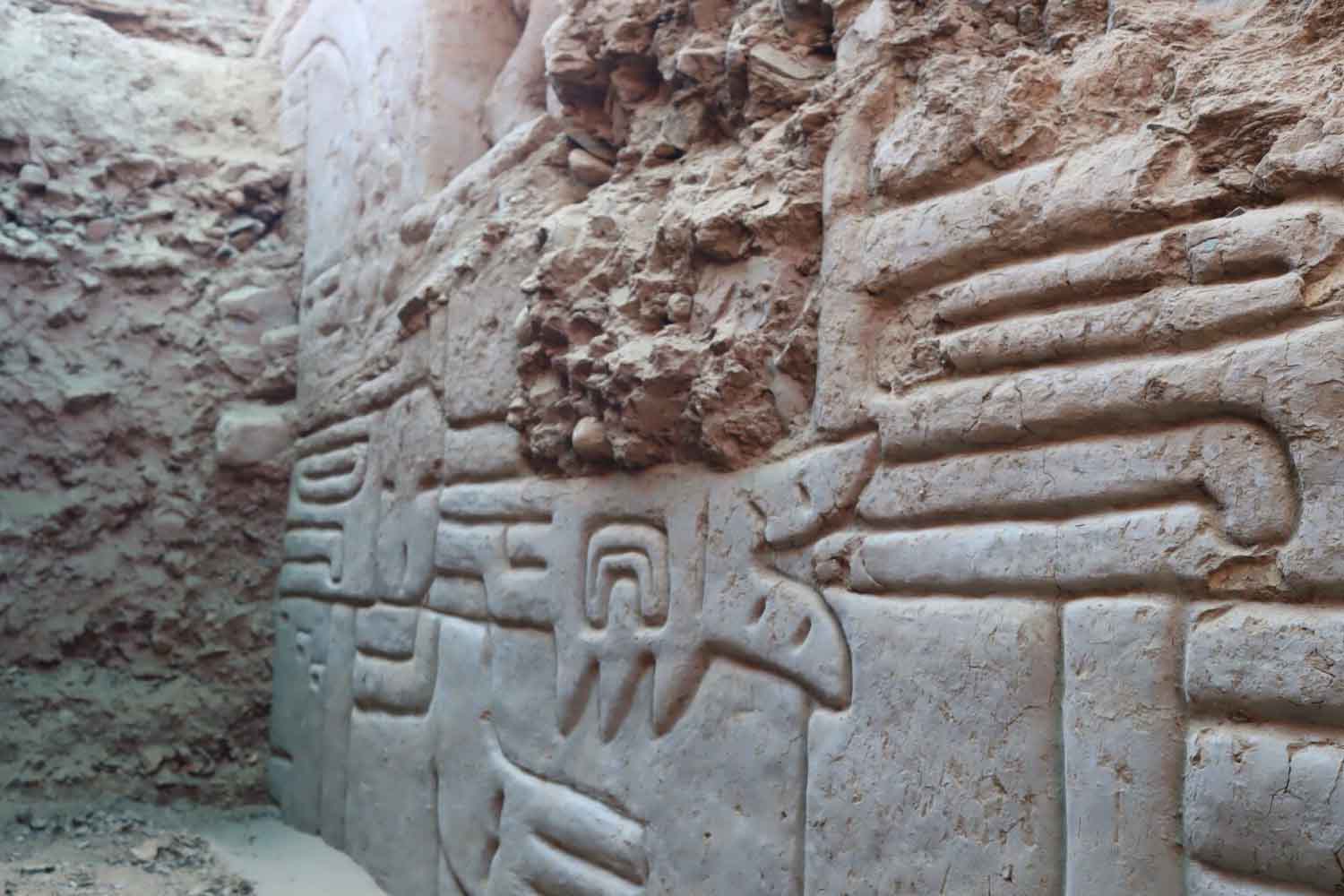Archaeologists uncovered a 3D mural in northern Peru dating to 2000–1000 BCE. Its vivid imagery blends shamanic visions, marine life, and astronomy, but the site is at urgent risk.

©Pontifical Catholic University of Peru
During an excavation at the little-known site of Huaca Yolanda, in the Tanguche Valley on Peru’s northern coast, archaeologist Ana Cecilia Mauricio of the Pontifical Catholic University of Peru uncovered something extraordinary: a multicolored three-dimensional mural unlike anything previously found in the region.
The painting, stretching 20 feet long and 9.5 feet high (6 meters by 2.9 meters), covers the inner walls of a ceremonial courtyard. Its colors—red, yellow, blue, and black—remain astonishingly vibrant, despite having been created more than two millennia ago.
A bird between heaven and sea
At the mural’s center, a majestic raptor spreads its wings, its head decorated with diamond-shaped motifs sculpted in relief, giving the entire scene a powerful three-dimensional effect. The creature appears to soar above a constellation of mythological beings, stars, marine plants, and fish—a visual narrative with clear spiritual undertones.
One of the most striking details is a fish whose body forms a complex lattice, almost like a net in motion. Alongside it appear real fishing nets and humanoid figures fused with aquatic symbols. Elsewhere, three human-like figures transform into birds, possibly shamans caught in trance.
Rituals, visions, and the sky
According to Mauricio, the scene may depict a ritual experience induced by hallucinogenic plants such as San Pedro cactus, still used today in Andean spiritual practices.
“These were people who lived by farming and fishing, but they already showed the first signs of social hierarchy,” she explains.
Shamans or priests occupied a central role, weaving together medical knowledge, spiritual authority, and celestial observation.
Beyond the hallucinatory iconography, the mural’s construction is a marvel in itself. The wall was built with clay mixed with organic materials, modeled in relief with painstaking care. The preservation of its original pigments is almost without precedent. For such an ancient period, the artistic sophistication is breathtaking.
Older than Chavín
Dating back to the Formative Period (2000–1000 BCE), the Huaca Yolanda mural predates both the Moche and Inca civilizations, and is even older than Chavín de Huántar, long considered the cradle of monumental Andean art. But while Chavín’s imagery celebrates jaguars and reptiles, Huaca Yolanda reflects a coastal identity, deeply tied to the sea and the stars.
This mural may be one of the earliest examples of monumental temple art in the Americas.
Its blend of marine and astronomical symbols suggests that ritual use of hallucinogens and star-gazing practices might have flourished along the coast, not just in the highlands.
“They possessed a profound knowledge of medicinal plants and the heavens,” Mauricio notes. “They could predict the weather by observing the stars and the sun.”
A fragile treasure at risk
Despite its extraordinary value, Huaca Yolanda is not protected by Peru’s Ministry of Culture. The discovery happened almost by chance, after looters left a gaping hole in the sand that exposed part of the structure below.
Today, the site faces constant threats from agricultural machinery, urban expansion, and the growing impacts of climate change. “Heavy machines are seriously damaging the site,” warns Mauricio. “We urgently need intervention from national and local authorities to protect this heritage before it’s too late.”
Without swift action, one of the oldest and most fascinating chapters in the history of the Americas could vanish beneath dust, asphalt, and neglect.
